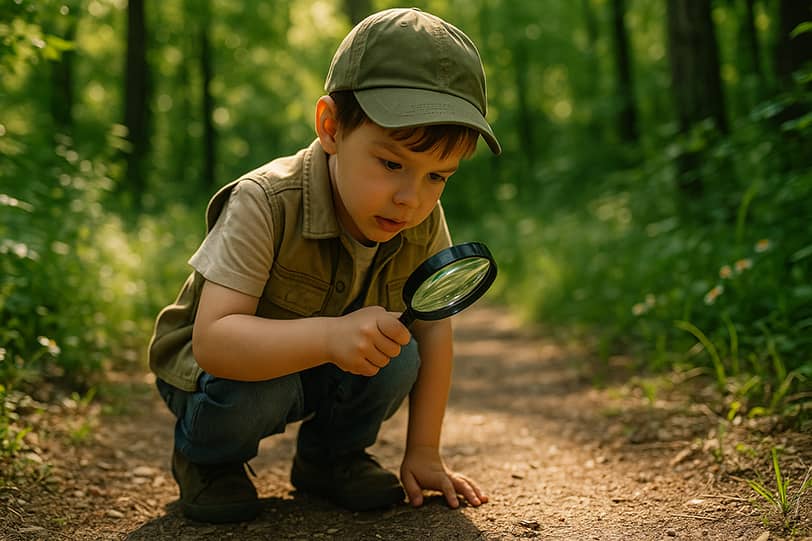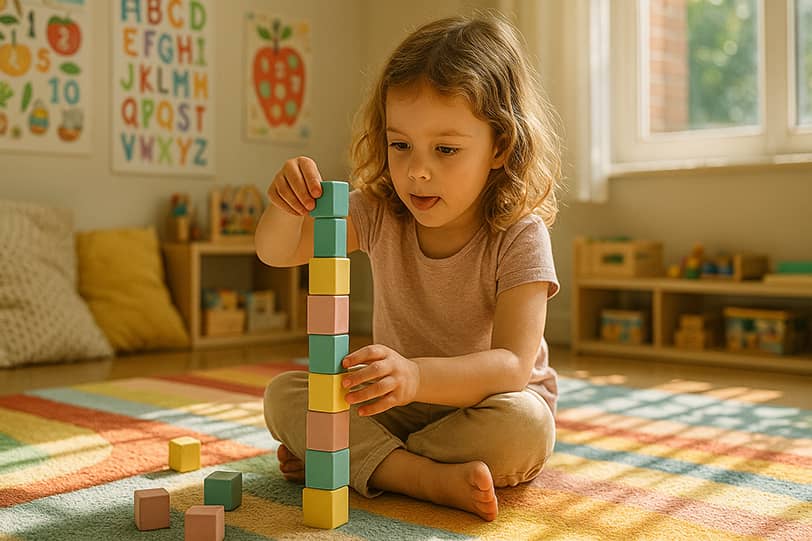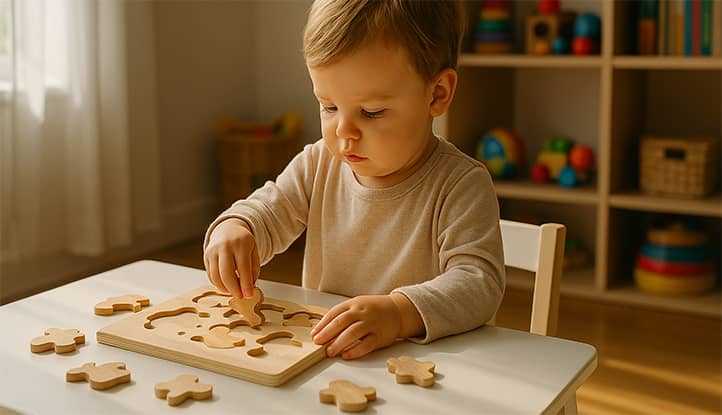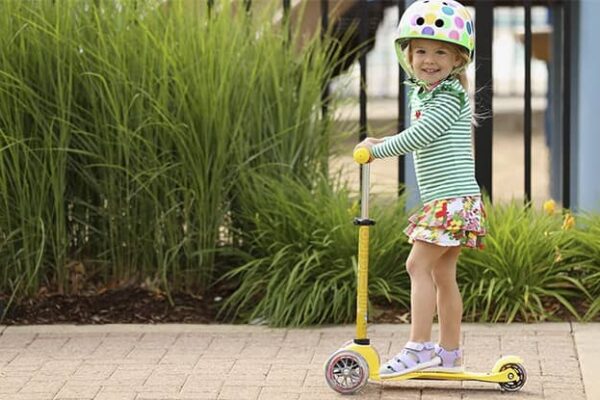From the very moment a child is born, parents begin to wonder: what matters more in their development—innate abilities or hard work? The myth of “genius,” which is supposedly inborn, has become deeply ingrained in popular consciousness. We admire young musicians, chess players, and mathematicians, assuming their success is solely the result of natural talent. But is that really the case? Modern psychology and neuroscience prove that even the most gifted child cannot realize their potential without the right environment, systematic practice, and support.
The topic of early development sparks heated debates precisely because it touches upon parents’ deepest fears and hopes. On one hand, they want to provide their child with every opportunity; on the other, they fear overburdening them or depriving them of childhood. Some methods promise to raise a genius almost from infancy, while others warn that overly intense learning can harm a child’s mental health. So where is the golden mean?
The goal of this article is to understand what truly determines a child’s success: innate predispositions or deliberate upbringing. I will examine scientific data on brain development, analyze examples of child prodigies and children who achieved success through hard work, and debunk popular myths. Ultimately, this is not about how to “turn a child into a genius,” but about how to help them unlock their potential—without pressure, stress, or unrealistic expectations. After all, what matters most is not the label of “giftedness,” but balanced development that allows a young person to grow up happy and self-assured.

Myths and Truths About Child Genius
Every parent has wondered at least once: what if my child is a prodigy? Maybe their unusual abilities are a sign of future genius? Society firmly believes the myth that true talent is an innate gift, a rare “gift from God” that either exists or doesn’t. But is that really the case? Modern research in psychology, genetics, and neuroscience shows that the reality is much more complex—and fascinating.
Before figuring out how to develop a child’s abilities, it’s important to understand what they actually depend on. Why can some children read by age 3, while others barely speak in sentences? Why do some child prodigies become geniuses, while others turn into ordinary adults, no different from their peers? Let’s separate myths from scientific facts and see what truly lies behind the concept of “child genius.”
“Talent is innate”—What Does Science Say?
For a long time, it was believed that exceptional abilities were the result of innate brain traits. Supposedly, Mozart became a great composer because he was born a genius, not because he practiced music from an early age under the guidance of his father, a teacher. However, modern research debunks this idea.
Scientists have found that even the most impressive abilities—whether perfect pitch, a mathematical mind, or artistic perception—develop due to a combination of two factors: genetic predisposition and the right environment. For example, a study published in Nature showed that only about 30% of intellectual abilities can be explained by heredity. The remaining 70% depend on upbringing, education, and the conditions in which a child grows up.
Moreover, neuroscientists have proven that a child’s brain is incredibly plastic—it literally “rewires” itself based on the tasks it regularly engages in. This means that even if a child has no “innate talent” for math, but they systematically train their logical thinking, their brain will form the necessary neural connections—and over time, they can achieve impressive results.
Conclusion: Yes, genetics play a role, but they only set the potential. Without the right environment and regular practice, even the most “gifted” child will not become a genius.
Examples of Child Prodigies: Early Success vs. Long-Term Results
The stories of child prodigies always inspire awe. Take William Sidis, who knew 8 languages by age 8 and enrolled at Harvard. Or Pablo Picasso, who painted like a professional artist by age 9. Or Akira Haraguchi, who memorized π to 100,000 digits. It would seem their futures were predetermined—but reality is often more complicated.
Many child geniuses who amazed the world at an early age do not become outstanding adults. William Sidis, despite his phenomenal intellect, never realized his potential—he avoided publicity and worked as an ordinary accountant. Meanwhile, Albert Einstein, on the contrary, showed no special talents as a child—he was even considered “slow” due to speech delays.
Why does this happen? Psychologists highlight several key factors:
- Pressure of expectations—When a child is labeled a “genius” from an early age, they may fear mistakes and avoid challenges.
- Narrow specialization—If all efforts are focused on one skill (e.g., music), other important areas (social skills, emotional intelligence) may lag behind.
- Loss of motivation—When success comes too early, the drive to keep improving can disappear.
Conclusion: Early achievements are no guarantee of future success. What matters more is balanced development and nurturing a love for learning, not just “drilling” for results.
The Role of Genetics and Environment: Twin and Adoption Studies
To determine what matters more—”nature” or “nurture”—scientists have spent decades studying twins and adopted children. These studies have yielded astonishing results.
Twins raised in different families:
- If one grew up in a family of academics and the other in a working-class family, their intellectual abilities were still strikingly similar. This points to strong genetic influence.
- But! Creativity, social skills, and even happiness levels depended more on environment.
Adopted children:
- If a child’s biological parents had high IQs but they grew up in an uneducated family, their potential often remained untapped.
- But if their adoptive family valued education, the child could surpass their biological parents.
What does this mean?
- Genes determine the ceiling of potential, but whether a child reaches it depends on their environment.
- Even with “average” genetics, good upbringing and education can lead to outstanding results.
Conclusion: Don’t blame “bad genes” or rely solely on genetics. The best strategy is to create conditions that help a child’s abilities flourish.
Genius is not just a “gift” but a complex mix of natural ability and hard work. Yes, some children are born with faster learning abilities, but without the right approach, their talent may never fully develop. On the other hand, even an “ordinary” child can achieve incredible heights with the right upbringing. So instead of searching for “innate genius,” it’s better to focus on helping your child develop at their own pace – with interest, joy, and without unnecessary pressure.

How a Child’s Brain Works: Plasticity and Potential
A child’s brain is not a miniature version of an adult brain but a unique, developing system with astonishing learning abilities. In the first years of life, a true revolution takes place in a child’s brain: up to a million new neural connections form every second. This process is so intense that by age 3, a child’s brain reaches 80% of an adult brain’s volume.
But why is early childhood considered the golden time for development? The answer lies in two fundamental properties of a child’s brain: neuroplasticity and the existence of special sensitive periods. These mechanisms explain why young children can effortlessly master skills that take adults years of rigorous training—whether it’s learning languages, playing musical instruments, or developing complex motor skills.
Let’s take a closer look at how this incredible “knowledge factory” in a child’s head works and how parents can help it operate at maximum efficiency without disrupting natural developmental processes.
Critical Periods of Development (Sensitive Periods)
Sensitive periods are special time windows when a child’s brain is most receptive to certain types of learning. During these periods, corresponding skills are acquired almost effortlessly, whereas learning them later requires significantly more time and effort.
Language Development (0-6 years)
- The most intensive period is from birth to age 3.
- During this time, a child can distinguish all sounds of all languages in the world but begins specializing in their native language by age 1.
- Interestingly, children raised in bilingual environments form separate neural networks for each language.
Emotional Development (0-2 years)
- This is when basic trust in the world and attachment are formed.
- Children deprived of emotional contact at this age often struggle with relationships later in life.
Motor Development (0-4 years)
- From crawling to walking, from chaotic movements to precise motor skills—each stage has its optimal learning period.
- For example, the skill of walking is most easily acquired between 10 and 18 months.
Mathematical Thinking (3-6 years)
- At this age, children naturally begin to grasp basic mathematical concepts—quantity, size, and shape.
- This is when playing with sorting toys, blocks, and counting materials has the greatest impact.
Important to understand: Sensitive periods are not rigid deadlines but optimal time frames. If a child doesn’t acquire a skill during the “expected” period, it doesn’t mean they can’t learn it later—it will just be less natural and require more effort.
Neuroplasticity: Why Early Age Is So Crucial?
Neuroplasticity is the brain’s ability to change based on experience, form new neural connections, and reorganize existing ones. In children, this process occurs especially intensely, explaining their phenomenal learning abilities.
Synapse Formation
- At birth, an infant has about 100 billion neurons—roughly the same as an adult.
- But the number of connections between them (synapses) in a child’s brain is twice that of an adult!
- This surplus allows the brain to adapt to any environment the child grows up in.
Synaptic Pruning Process
- After age 3, the “pruning” of unused connections begins.
- The brain keeps only the neural pathways that are actively used, while others gradually disappear.
- This explains why skills acquired in early childhood (e.g., native language) stay with us forever.
Window of Opportunity
- The highest plasticity is observed before age 7-8, then gradually declines.
- This is why, for example, immigrant children who enter a new language environment before this age usually speak without an accent, while those who move later often retain an accent for life.
Role of Myelination
- The process of coating neurons with myelin (which speeds up signal transmission) continues until age 25-30.
- But it happens most intensively in the first years of life, making learning during this period especially effective.
How Skills Are Formed: From Speech to Logical Thinking
The process of mastering new abilities in a child’s brain goes through several stages, each with its own neurobiological characteristics.
Language Skills
- 0-6 months: The infant distinguishes all phonemes of human speech.
- 6-12 months: Begins specializing in sounds of their native language.
- 1-3 years: Explosive vocabulary growth (up to 10 new words a day).
- 3-6 years: Mastering grammatical structures.
Interesting fact: Children who are spoken to frequently can have three times the vocabulary by age 3 compared to peers deprived of verbal interaction.
Motor Skills
Development follows the “top-down” (head to feet) and “center-to-periphery” principle:
- First, control over neck muscles (holding the head up).
- Then arms (grasping).
- Then torso (sitting, crawling).
- Finally, legs (walking, running).
Cognitive Development
- 0-2 years: Sensorimotor stage (learning through action).
- 2-7 years: Preoperational stage (symbolic thinking develops).
- 7-11 years: Concrete operations (logical thinking about tangible things).
- After 11 years: Formal operations (abstract thinking).
Social Skills
- 0-9 months: Recognizing familiar faces.
- 9-18 months: Joint attention (following an adult’s gaze).
- 2-3 years: Understanding that others have their own thoughts.
- 4-5 years: Developing empathy and moral judgments.
Important note: All these processes are interconnected. For example, fine motor skill development directly affects speech centers in the brain, while social interaction stimulates cognitive growth. That’s why a holistic approach to child development is most effective, rather than narrowly training isolated skills.

The Role of Effort and Environment in Child Development
When we admire young violinists, chess players, or mathematicians, a natural question arises: is their success the result of innate talent or painstaking work? Modern research convincingly proves that even the most gifted child will not reach great heights without the right environment and systematic practice. But how do we strike a balance between developmental activities and childhood? Where is the line between nurturing abilities and forced “drilling”?
The environment in which a child grows up plays no less important a role than natural predispositions. This is confirmed by both scientific data and the biographies of outstanding individuals. However, not all early development methods are equally beneficial, and blindly following popular theories (like the notorious “10,000-hour rule”) can do more harm than good. Let’s examine how effort and environment truly influence child development and how to use this knowledge wisely.
The 10,000-Hour Rule (Ericsson) – Does It Apply to Children?
Popularized by Malcolm Gladwell, Anders Ericsson’s theory states that achieving mastery in any field requires about 10,000 hours of deliberate practice. However, when applied to children, this concept requires serious caveats.
Origins of the theory:
- Ericsson’s research was conducted among adult musicians, not children.
- Applying these conclusions to early development is a significant oversimplification.
- Ericsson himself repeatedly emphasized that what matters is not just “putting in the hours” but conscious practice under the guidance of an experienced mentor.
Risks of early specialization:
- Physical and emotional burnout.
- Loss of motivation by adolescence.
- Underdevelopment of other crucial skills (social, emotional).
Example: Many young athletes who dedicated their entire childhood to training quit sports by ages 14-16.
Alternative approach:
For preschool-aged children, the following are far more important:
- Variety of activities.
- Learning through play.
- Changing activities every 15-20 minutes.
Research shows that children who had diverse experiences in childhood later achieve mastery in their chosen field more easily.
Optimal practice duration (by age):
- 3-5 years: No more than 30 minutes per day of structured activities.
- 6-8 years: 45-60 minutes with breaks.
- 9-12 years: 1-2 hours with alternating activities.
Conclusion: The 10,000-hour rule should not be a parenting guide for preschoolers. What matters more is creating a rich developmental environment and nurturing the child’s natural curiosity.
Early Development Methods: Montessori, Doman, Zaitsev – Pros and Risks
Modern parents have access to dozens of early development methods. Let’s analyze three of the most popular:
1. Montessori System
Pros:
- Focus on independence and self-directed learning.
- Development through specialized didactic materials.
- Respect for the child’s individual pace.
Risks:
- Lack of spontaneous play.
- Weak preparation for traditional schooling.
- May not suit highly sociable children.
2. Doman Method (Flashcards)
Pros:
- Rapid memorization of facts.
- Development of visual memory.
- Potential for early reading.
Risks:
- Passive absorption of information.
- No critical thinking development.
- Risk of overloading the nervous system.
3. Zaitsev’s Cubes
Pros:
- Play-based approach to reading.
- Engages multiple sensory channels.
- Suitable for active children.
Risks:
- Difficult transition to traditional reading.
- Doesn’t develop phonemic awareness.
- Limited to reading skills only.
Golden rules for choosing a method:
- Combine elements from different approaches.
- Observe the child’s reactions.
- Don’t chase early results.
- Remember: no method guarantees “genius.”
Case Studies of Successful People: What Mattered More – Talent or Perseverance?
An analysis of outstanding individuals’ biographies reveals a surprising pattern: the decisive factor was almost always a combination of factors.
Mozart:
Often considered a natural prodigy, but:
- His father was a renowned music teacher.
- Began music training at age 3.
- By age 6, he already had 3,500 hours of practice.
Marie Curie:
- Showed no exceptional abilities in childhood.
- Became a two-time Nobel Prize winner through perseverance.
- Worked in extremely unfavorable conditions.
Steve Jobs:
- Had no outstanding academic achievements.
- Key influences: adoptive father (a mechanic) and a neighbor (HP engineer).
- Success came from persistence + unique vision.
Modern research:
Studies of Nobel laureates show:
-
Only 10% displayed exceptional talent as children.
-
90% became outstanding due to:
-
Family support.
-
Access to educational resources.
-
Ability to overcome challenges.
-
Conclusion: Natural abilities are just potential. Their realization depends on:
- Systematic practice.
- A supportive environment.
- Emotional encouragement.
- Flexible thinking (ability to adapt strategies).
Practical Tips for Parents:
- Focus on the process, not results.
- Create a “zone of proximal development” (Vygotsky’s theory).
- Praise effort, not “talent.”
- Remember: true success is balanced personal growth, not early achievements.
The ultimate secret to raising a successful child is simple: Create an environment where there’s room for both work and play, where not just outcomes but the joy of learning are valued. This approach allows both innate talents and hard work to flourish—along with unexpected abilities that may emerge long after early childhood.

The Dangers of “Early Start”: When Development Does More Harm Than Good
In the pursuit of early achievements, many parents forget a simple truth: childhood is not just preparation for the future but a valuable stage of life in itself. Modern research reveals an alarming trend: the number of children showing symptoms of chronic stress and emotional burnout is rising in proportion to the popularity of early development methods.
Psychologists are sounding the alarm: accelerated learning in preschool age often backfires. Instead of curious and enthusiastic children, we end up with exhausted, anxious toddlers who have lost interest in learning. Where is that line beyond which the good intention of giving a child a “head start” turns into psychological harm? Let’s examine how to recognize warning signs and create a healthy environment for development.
Burnout in Children: Why Pushing Learning Is Harmful
Childhood burnout is not a myth but a real issue recognized by the WHO. It manifests differently than in adults:
Common symptoms:
- Loss of interest in previously enjoyed activities.
- Frequent colds (as a psychosomatic reaction).
- Sleep and appetite disturbances.
- Unexplained tearfulness.
- Reluctance to attend classes (“my stomach/head hurts”).
Causes of burnout in preschoolers:
-
Age-inappropriate workloads
-
A child’s brain under 7 is physiologically unsuited for prolonged structured activities. Recommended limits:
-
3-4 years: No more than 15 minutes of continuous “academic” activity.
-
5-6 years: Maximum 30 minutes.
-
-
-
Disrupted natural biorhythms
-
Morning (9 AM–12 PM) is the best time for cognitive activities.
-
After lunch, preschoolers critically need:
-
Free play.
-
Physical activity.
-
Creative pursuits without strict rules.
-
-
-
Focus on results over process
-
When parents constantly ask, “What did you learn?” or “How many words did you read?”, it creates toxic pressure. Children develop a fear of mistakes.
-
Real cases from psychologists’ practice:
- A 5-year-old girl attending 7 clubs started pulling out her hair until bald patches appeared.
- A 6-year-old boy preparing for a math Olympiad began wetting his bed.
- A 4-year-old who learned English from age 2 stopped speaking entirely for 2 months.
Emotional Intelligence vs. Academic Success
Neuropsychologists have proven: brain regions responsible for emotional development and academic skills mature at different rates. By rushing one, we inevitably hinder the other.
Why EQ matters more than IQ in early childhood:
-
Developmental timing
-
Basic emotional skills (empathy, self-regulation) form before age 7. Academic knowledge can be acquired later.
-
-
Impact on success
-
A Harvard Business School study found: 85% of career success depends on EQ, while only 15% relies on IQ.
-
Critical skills compromised by early academics:
- Recognizing one’s own emotions.
- Coping with frustration.
- Cooperative abilities.
- Creative thinking.
Red flags of imbalance:
- A child knows letters but can’t ask for help.
- Counts to 100 but doesn’t share toys.
- Reads but doesn’t understand when others are hurt.
How to Avoid Pressuring Children: Psychologists’ Advice
10 rules for healthy development from child psychologists:
-
“Less is more” principle
-
Before age 5: no more than 2-3 weekly classes, all play-based.
-
-
Follow the child’s interest
-
If they refuse “enrichment” activities three times in a row, take a break.
-
-
The 3:1 golden ratio
-
For every 1 hour of structured learning, allow 3 hours of free play.
-
-
Non-judgmental space
-
Avoid: “You did this better than everyone!” → Instead: “Do you like what you made?”
-
Signs of a healthy workload:
- The child voluntarily mentions activities.
- Energy remains after lessons.
- Curiosity persists in other areas.
Alternatives to early academics:
-
Instead of Doman flashcards → Shared book reading.
-
Instead of handwriting drills at 4 → Clay modeling and drawing.
-
Instead of memorizing poems → Inventing stories together.
Overload test:
-
Every month, declare a “week off” from all classes. If behavior improves, the child was overloaded.
WHO guidelines:
-
Under 5: ≤ 1 hour of screen time daily.
-
≥ 3 hours of physical activity daily.
-
10–13 hours of sleep (including naps).
Key takeaway: A child who reads at 4 and one who learns at 7 typically even out by age 8. But the effects of emotional overload can last a lifetime.
The true measure of successful development is not early academic feats but the spark in a child’s eyes and their natural drive to explore the world.

The Golden Mean: How to Help Without Harming
In today’s world, saturated with early development methods, parents often face a difficult choice: how to give their child a good start without depriving them of childhood? How to find that perfect balance where development happens naturally—without psychological pressure, yet without missed opportunities? The answer lies in understanding the child’s individual characteristics and wisely combining different approaches.
Psychologists and neurophysiologists agree: the most effective learning occurs when it aligns with the brain’s natural developmental stages. This doesn’t mean we should just wait for the child to “mature”—but pushing them toward something they’re not ready for is extremely harmful. Let’s explore how to recognize readiness for learning, why play is serious business, and how to create that “golden mean” where a child develops joyfully and stress-free.
Signs of a Child’s Readiness for Learning
Every child develops at their own pace, but there are clear markers indicating readiness to acquire new skills. Here’s what to look for:
For learning to read (typically 5-7 years):
- Shows interest in books and letters.
- Can focus for 10-15 minutes.
- Distinguishes sounds in words (hears that “cat” starts with “k”).
- Holds a pencil correctly and draws simple shapes.
For beginning math (4-6 years):
- Understands “more-less” concepts.
- Can count objects up to 5-10.
- Recognizes basic geometric shapes.
- Shows interest in numbers in the environment (house numbers, prices in stores).
Important non-academic signs of readiness:
- Can handle minor frustrations.
- Shows persistence in problem-solving.
- Can follow simple instructions.
- Has sufficiently developed fine motor skills.
How to test readiness in practice:
- Introduce a new activity in a playful way.
- Observe: if the child engages and asks for more—they’re ready.
- If they resist or lose interest quickly—it’s better to wait.
Remember: Forced learning before these signs appear requires 3-5 times more effort and often leads to rejection.
Play as the Primary Tool for Development
Modern brain research confirms: play isn’t just entertainment—it’s the primary learning mechanism in childhood. Here’s why it matters:
Neurophysiology of play:
- All brain regions activate during play.
- BDNF (a protein that stimulates neuron growth) is produced.
- Connections form between emotional and cognitive centers.
Types of developmental play by age:
2-4 years:
- Role-playing games (playing house, store).
- Sensory play (sand, water, grains).
- Simple building sets (large blocks).
4-6 years:
- Games with rules (lotto, dominoes).
- Creative play (theater, freeform drawing).
- Medium-complexity construction sets.
6-8 years:
- Strategy games (chess, backgammon).
- Exploratory play (experiments, collecting).
- Complex construction sets with instructions.
How to turn play into a learning activity:
- Follow the child’s interest.
- Add educational elements subtly (“Let’s count how many cars are in the garage?”).
- Alternate activities every 15-20 minutes.
- Use everyday situations (cooking = a great math lesson).
Important: True developmental play is always voluntary and joyful. If you notice signs of fatigue or frustration—take a break.
Creating a Supportive Environment Without Psychological Pressure
A supportive environment isn’t just about educational materials—it’s also about communication style. Key principles:
-
Safe emotional atmosphere:
-
Normalize mistakes (“Wow, that’s interesting! Let’s try again”).
-
Avoid comparisons with other children.
-
Focus on the process, not the result.
-
-
Space organization:
-
Zones for quiet activities, active play, and creativity.
-
Accessible materials (shelves at the child’s height).
-
Fewer ready-made toys, more open-ended materials.
-
-
Routine and rhythms:
-
Clear alternation of activity and rest.
-
“Free time” slots (at least 2 hours daily).
-
Respect for natural biorhythms (early bird or night owl).
-
-
Adult’s role:
-
Not a teacher, but a co-explorer.
-
Help on request (“Need a hint or want to try yourself?”).
-
Genuine interest in the child’s discoveries.
-
-
Digital balance:
-
Under 3: minimal screen time.
-
3-6 years: ≤30 minutes/day of high-quality content.
-
Discuss what they watch together.
-
Practical phrases:
- “You’re almost there! Just a little more.”
- “Why do you think that happened?”
- “Let’s take a break and come back later.”
- “I love how hard you’re trying!”
The ultimate success metric: The child retains their natural curiosity and desire to learn.

Conclusion
When we talk about child genius, it’s important to understand: behind every little prodigy lie not only innate abilities but also tremendous effort—and not just from the child themselves, but from the adults around them. Modern science dispels the myth that exceptional talent is solely a “gift of nature.”
Research convincingly proves: even the most gifted child needs the right environment, proper support, and the freedom to develop at their own pace. Genius is always a combination of many factors:
- Unique neurological wiring,
- Favorable conditions,
- Timely noticed and nurtured interests,
- And most importantly – systematic practice that brings joy.
Many parents make a crucial mistake: they confuse the goal. In pursuit of the “parent of a genius” label, we often forget that our task isn’t to mold a child into a prefabricated wunderkind but to help them unlock their own unique potential. This requires not so much rigid methods and drills as attentiveness, patience, and wisdom.
History offers many examples of children who showed no early promise but, thanks to supportive families, made groundbreaking achievements as adults. Conversely, many prodigies subjected to intense pressure in childhood never fully realized their potential.
The secret to balanced development lies in harmony:
- Between structured learning and free play,
- Between adult guidance and a child’s autonomy,
- Between skill development and preserving childhood.
The happiest and most successful adults are usually those who were allowed to be children: to explore the world at their own rhythm, follow diverse passions, make mistakes, and try again. Their talents flourished not in spite of, but because they had wise adults by their side—those who knew when to support but not pressure, to guide but not force, to inspire but not demand the impossible.
Today, as the education market bombards parents with dozens of “genius-raising” methods, this wisdom is more vital than ever. Remember:
- True talent grows not from fear of failure but from the joy of discovery.
- Not from rote learning under pressure but from genuine curiosity.
- Not from blindly following instructions but from the freedom to interpret the world creatively.
Your parental mission isn’t to create a genius—but to create conditions where your child can become the best version of themselves. Observe their interests, lead by example, offer opportunities—but never fight against nature. The greatest gift you can give your child isn’t a set of skills but unshakable self-belief and a lifelong love of learning.




